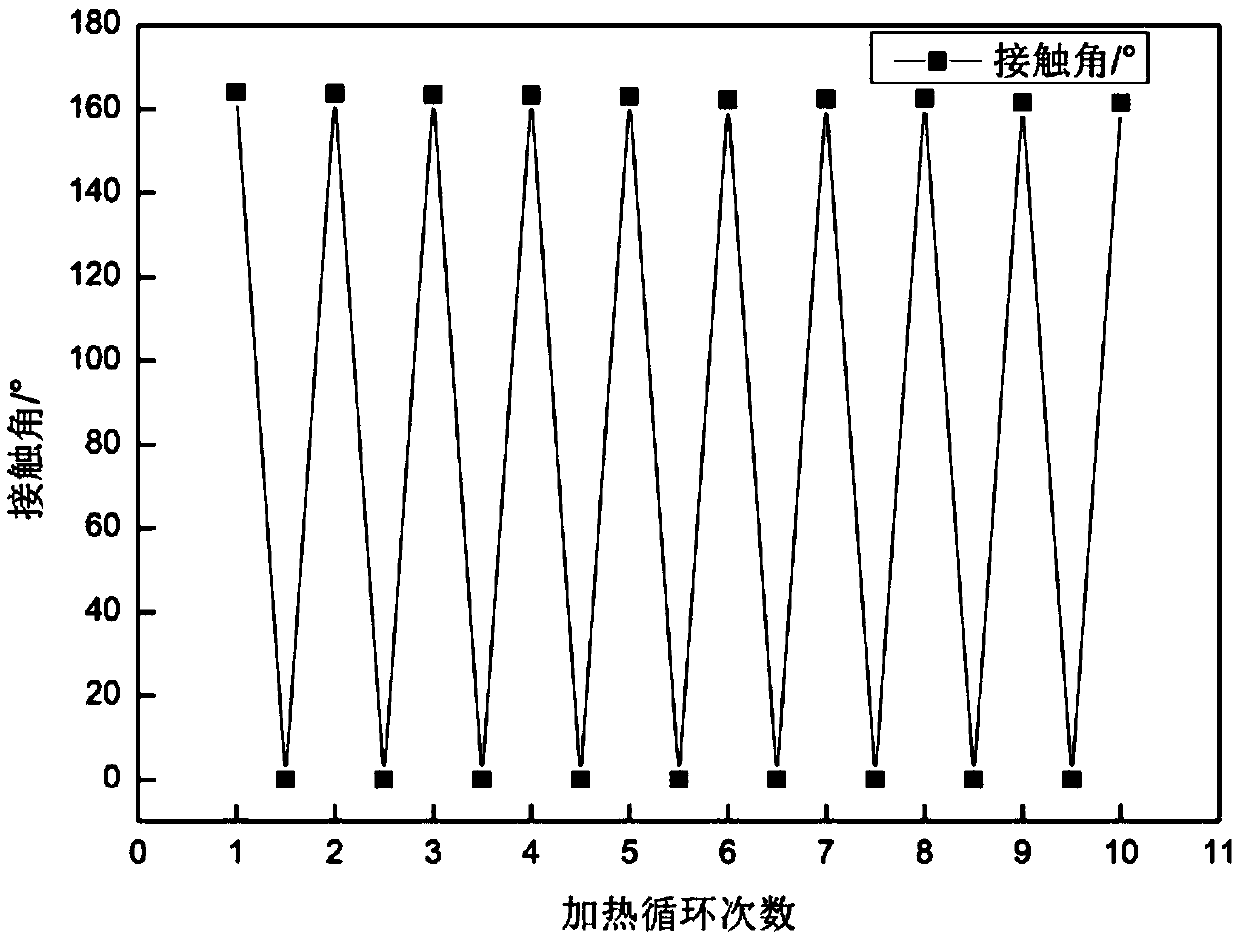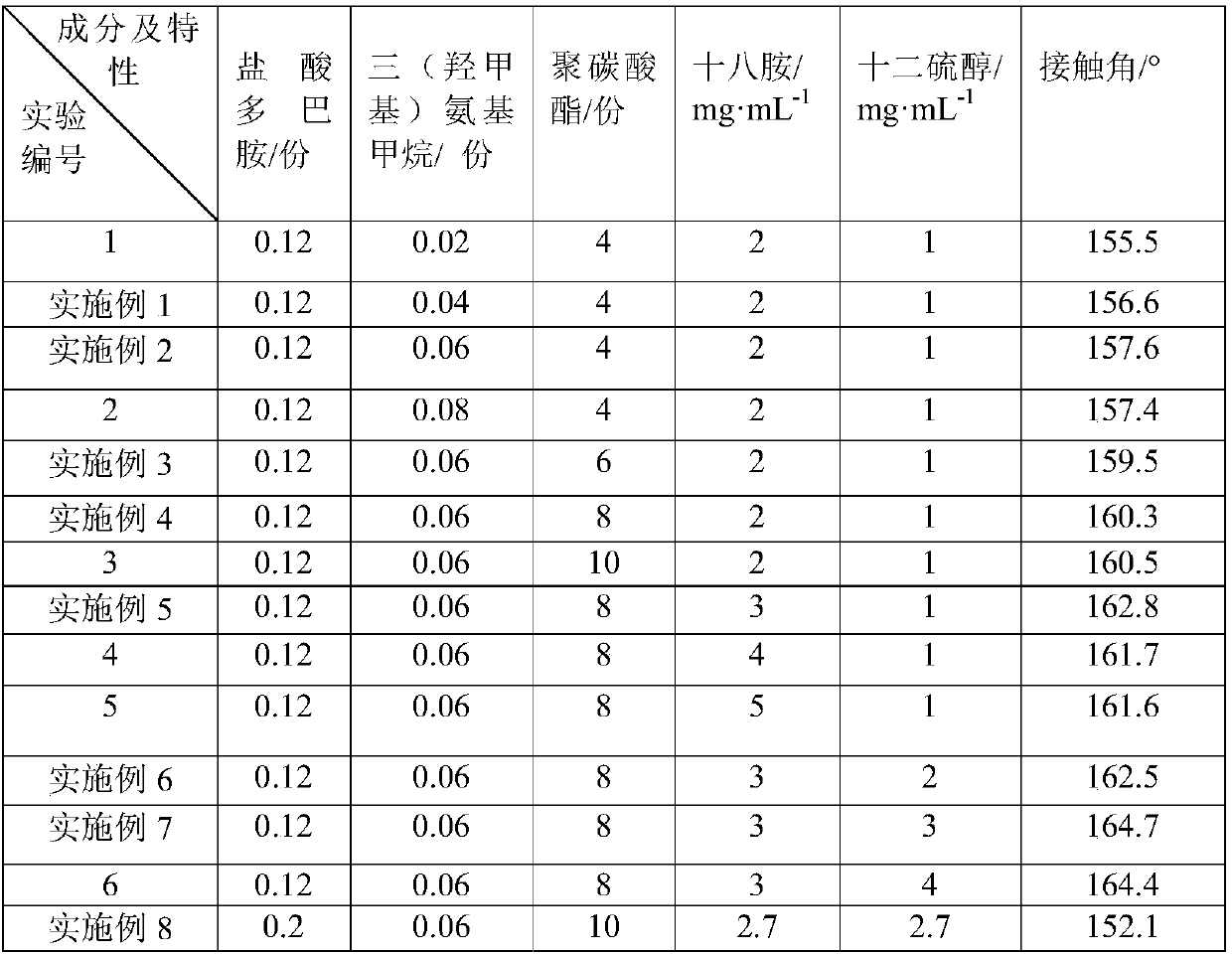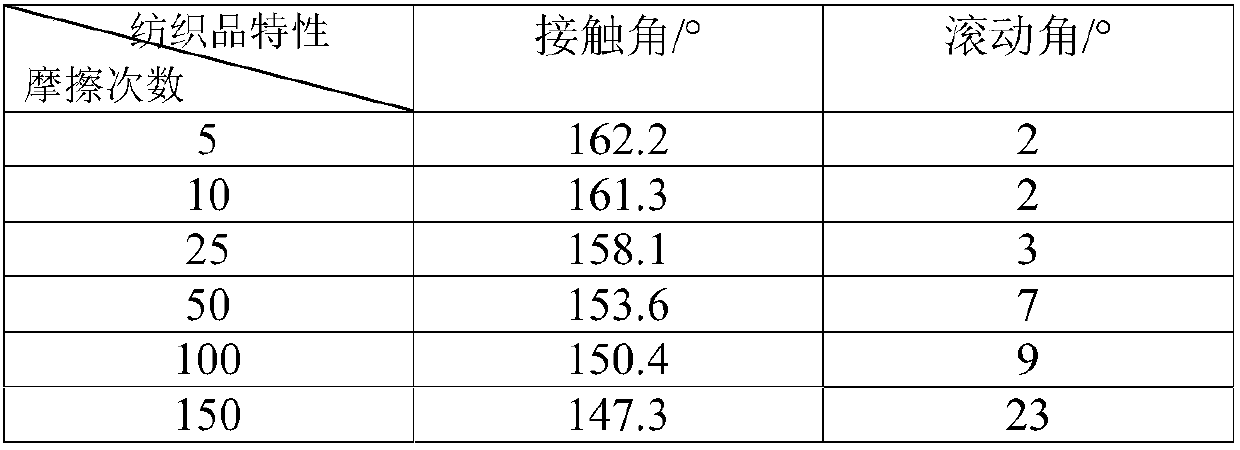Preparation method of temperature-responsive self-repairing super-hydrophobic fabric
A temperature-responsive, super-hydrophobic technology, applied in textiles and papermaking, liquid-repellent fibers, fiber treatment, etc., can solve the problems of super-hydrophobic fabric stability, poor washing and abrasion resistance, and save production input costs , short process flow and convenient operation
- Summary
- Abstract
- Description
- Claims
- Application Information
AI Technical Summary
Problems solved by technology
Method used
Image
Examples
Embodiment 1
[0036] (1) At room temperature, take 0.12 parts of dopamine hydrochloride in a beaker, add 0.04 parts of tris(hydroxymethyl)aminomethane, and then add deionized water to a total weight of 100 parts, and stir with a magnetic stirrer for 3 hours. Under stirring, soak the fabric in the above solution at a bath ratio of 1:100 for 20 minutes, take it out, rinse the surface of the fabric with a large amount of deionized water until it is white or light yellow, and dry it in an oven at 60°C for 30 minutes.
[0037] (2) Dissolve 4 parts of polycarbonate in 100 parts of dichloromethane, soak the above fabric in the solution for 8 minutes under stirring, take it out, put it in the air for 2 minutes, and then soak it in 130 parts of p-xylene for 1 minute and concentration 35 parts of 2g / L sodium bicarbonate solution for 5 minutes, placed at room temperature for 20 minutes, and finally dried in an oven at 60°C for 30 minutes.
[0038] (3) Take 2 parts of octadecylamine in a beaker, add ab...
Embodiment 2
[0045] (1) At room temperature, take 0.12 parts of dopamine hydrochloride in a beaker, add 0.06 parts of tris(hydroxymethyl)aminomethane, and then add deionized water to a total weight of 100 parts, and stir with a magnetic stirrer for 3 hours. Under stirring, the fabric was immersed in the above solution at a bath ratio of 1:100 for 20 minutes, taken out, rinsed with a large amount of deionized water until the surface of the fabric was white or light yellow, and dried in an oven at 60°C for 30 minutes.
[0046] (2) Dissolve 4 parts of polycarbonate in 100 parts of dichloromethane, soak the above fabric in the solution for 8 minutes under stirring, take it out, put it in the air for 2 minutes, and then soak it in 130 parts of p-xylene for 1 minute and concentration 35 parts of 2g / L sodium bicarbonate solution for 5 minutes, placed at room temperature for 20 minutes, and finally dried in an oven at 60°C for 30 minutes.
[0047] (3) Take 2 parts of octadecylamine in a beaker, ad...
Embodiment 3
[0054] (1) At room temperature, take 0.12 parts of dopamine hydrochloride in a beaker, add 0.06 parts of tris(hydroxymethyl)aminomethane, and then add deionized water to a total weight of 100 parts, and stir with a magnetic stirrer for 3 hours. Under stirring, the fabric was immersed in the above solution at a bath ratio of 1:100 for 20 minutes, taken out, rinsed with a large amount of deionized water until the surface of the fabric was white or light yellow, and dried in an oven at 60°C for 30 minutes.
[0055] (2) Dissolve 6 parts of polycarbonate in 100 parts of dichloromethane, soak the above fabric in the solution for 8 minutes under stirring, take it out, put it in the air for 2 minutes, and then soak it in 130 parts of p-xylene for 1 minute and concentration 35 parts of 2g / L sodium bicarbonate solution for 5 minutes, placed at room temperature for 20 minutes, and finally dried in an oven at 60°C for 30 minutes.
[0056] (3) Take 2 parts of octadecylamine in a beaker, ad...
PUM
 Login to View More
Login to View More Abstract
Description
Claims
Application Information
 Login to View More
Login to View More - R&D
- Intellectual Property
- Life Sciences
- Materials
- Tech Scout
- Unparalleled Data Quality
- Higher Quality Content
- 60% Fewer Hallucinations
Browse by: Latest US Patents, China's latest patents, Technical Efficacy Thesaurus, Application Domain, Technology Topic, Popular Technical Reports.
© 2025 PatSnap. All rights reserved.Legal|Privacy policy|Modern Slavery Act Transparency Statement|Sitemap|About US| Contact US: help@patsnap.com



